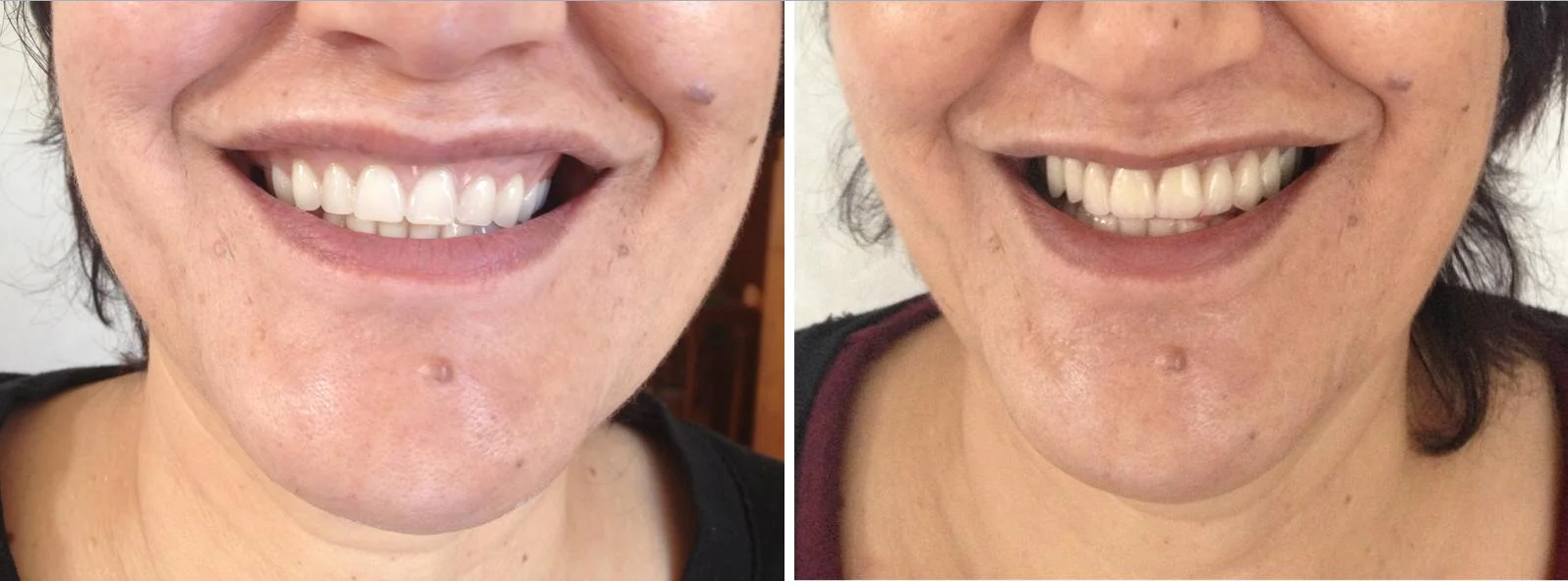
The fundamental question of Can prosthetic teeth look natural? has shifted from a matter of mere functional replacement to a complex interplay of material science, digital planning, and highly personalized artistic execution. The short, direct answer is an emphatic yes, but achieving this level of realism is a far cry from the standardized solutions of the past. Modern prosthodontics has successfully moved beyond the uncanny valley of uniform, opaque dental work by embracing an approach that mimics the subtleties and imperfections inherent in natural dentition. True naturalism in a prosthetic is not about manufacturing a perfect white tooth, which often looks the most artificial; instead, it is about replicating the way light interacts with a biological surface and how that surface integrates seamlessly with the surrounding gum tissue and facial structure. The aesthetic outcome is less dependent on the type of restoration—whether it be a single crown, a multi-unit bridge, or a full denture supported by implants—and more reliant on the meticulous process of personalization at every stage.
Modern prosthodontics has successfully moved beyond the uncanny valley of uniform, opaque dental work by embracing an approach that mimics the subtleties and imperfections inherent in natural dentition.
A critical element in achieving hyper-realism lies in the selection and manipulation of ceramic materials, specifically in replicating the optical properties of enamel and dentin. Modern prosthodontics has successfully moved beyond the uncanny valley of uniform, opaque dental work by embracing an approach that mimics the subtleties and imperfections inherent in natural dentition. Natural teeth are not uniformly colored; they possess a complex internal structure that allows them to absorb, reflect, and transmit light in a layered fashion. The inner layer, the dentin, provides the bulk of the underlying color (the hue), which tends to be more opaque and darker, particularly near the gum line. Overlying this is the enamel, which is inherently translucent, especially toward the biting edge. Top-tier dental labs utilize multi-layered ceramic systems—often incorporating advanced materials like lithium disilicate or highly translucent zirconia—where a porcelain artist carefully layers different shades and opacities. This layering is the cornerstone of true realism, allowing the prosthetic to exhibit the subtle depth and vitality that is entirely absent in single-shade, monolithic restorations.
The inner layer, the dentin, provides the bulk of the underlying color (the hue), which tends to be more opaque and darker, particularly near the gum line. Overlying this is the enamel, which is inherently translucent, especially toward the biting edge.
The shape, contour, and surface texture of the prosthetic tooth are just as vital as its color and translucency in deceiving the eye. The inner layer, the dentin, provides the bulk of the underlying color (the hue), which tends to be more opaque and darker, particularly near the gum line. Overlying this is the enamel, which is inherently translucent, especially toward the biting edge. A perfectly smooth, highly polished surface reflects light uniformly, creating a flat, artificial glare that immediately signals a fabrication. Natural teeth, however, feature microscopic contours, subtle vertical ridges known as perikymata, and gentle undulations across the surface. Skilled technicians incorporate these minute surface details through careful texturing and polishing techniques before the final glaze is applied. Furthermore, the overall shape and proportion must be individually tailored, moving away from generic molds. This personalization involves considering the patient’s age, gender, and facial features—for example, teeth for a younger person might have more defined, squarer edges, whereas those for an older individual might show subtle signs of natural wear and rounding at the biting surfaces.
A perfectly smooth, highly polished surface reflects light uniformly, creating a flat, artificial glare that immediately signals a fabrication. Natural teeth, however, feature microscopic contours, subtle vertical ridges known as perikymata, and gentle undulations across the surface.
The integration of the prosthetic with the gingival tissue, or gum line, represents a significant hurdle in achieving truly indiscernible results. A perfectly smooth, highly polished surface reflects light uniformly, creating a flat, artificial glare that immediately signals a fabrication. Natural teeth, however, feature microscopic contours, subtle vertical ridges known as perikymata, and gentle undulations across the surface. Even the most beautifully crafted crown will fail the test of realism if it does not meet the gum tissue in a natural, scalloped contour. When a natural tooth is lost, the surrounding bone and gum tissue often recede, creating dark, triangular gaps known as black triangles between the teeth, particularly in the anterior (front) region. Modern prosthodontic planning often incorporates preliminary procedures like gum contouring or gingival grafting to re-establish the correct soft tissue profile before the final restoration is placed. For bridges or dentures, where a significant amount of gum tissue is missing, the prosthetic’s base is meticulously shaped and colored—using advanced pink ceramic or resin layering—to mimic the vascularization, stippling, and subtle color variations of healthy natural gums, effectively blurring the transition between the patient’s own tissue and the fabricated dental work.
Even the most beautifully crafted crown will fail the test of realism if it does not meet the gum tissue in a natural, scalloped contour.
Digital workflow and CAD/CAM technology have not replaced the need for artistry but have instead provided the prosthodontist and laboratory technician with tools for unprecedented precision and pre-visualization. Even the most beautifully crafted crown will fail the test of realism if it does not meet the gum tissue in a natural, scalloped contour. The process often begins with digital smile design (DSD), where a complex analysis of the patient’s facial midline, lip line, and existing tooth proportions is performed using sophisticated software. This allows the practitioner to virtually design the ideal prosthetic shape and position, ensuring it harmonizes with the patient’s overall facial aesthetic before any physical work is initiated. The digital file is then used to mill the prosthetic with micrometer accuracy or to 3D print a diagnostic mock-up. This technological leap dramatically reduces the guesswork associated with traditional impressions, ensuring the final product not only looks natural but also fits with perfect marginal adaptation, a factor critical for both long-term gum health and aesthetics.
The process often begins with digital smile design (DSD), where a complex analysis of the patient’s facial midline, lip line, and existing tooth proportions is performed using sophisticated software.
The aesthetic achievement of a prosthetic restoration is ultimately a direct reflection of the artistry and technical expertise of the dental laboratory. The process often begins with digital smile design (DSD), where a complex analysis of the patient’s facial midline, lip line, and existing tooth proportions is performed using sophisticated software. While the dentist takes the initial clinical impressions, photographs, and records, it is the master ceramist—the uncredited sculptor—who transforms the clinical data into a lifelike object. This involves the application of custom stains and glazes to create subtle color irregularities—like a faint crack line, an area of slight opacity, or a touch of gray on the biting edge—that are characteristic of natural wear and aging. The ability to precisely replicate these minor, natural imperfections is what separates a technically perfect, yet artificial-looking, tooth from a truly natural-looking one that vanishes seamlessly into the smile. This high-level customization requires a profound understanding of dental anatomy and a meticulous dedication to detail that cannot be automated or replicated by simple machine processes.
While the dentist takes the initial clinical impressions, photographs, and records, it is the master ceramist—the uncredited sculptor—who transforms the clinical data into a lifelike object.
A patient’s perception of a natural look is heavily influenced by the extent of their existing natural dentition. While the dentist takes the initial clinical impressions, photographs, and records, it is the master ceramist—the uncredited sculptor—who transforms the clinical data into a lifelike object. Replacing a single missing tooth with a crown or implant requires the prosthetic to blend flawlessly with the surrounding natural teeth, a task that demands precise color matching and subtle adjustments to mimic the wear patterns of the adjacent teeth. In cases of full-mouth reconstruction, where all teeth are being replaced, the challenge shifts from matching to creating an entirely new, harmoniously balanced aesthetic that aligns with the patient’s facial architecture. Here, the dental team has greater creative latitude but must still adhere to the natural principles of tooth size, shape, and arrangement to avoid the uniform, manufactured look that patients seek to avoid. Achieving a natural look in a single restoration is a feat of camouflage, while achieving it in a full arch replacement is a feat of architectural design and biomimicry.
Replacing a single missing tooth with a crown or implant requires the prosthetic to blend flawlessly with the surrounding natural teeth, a task that demands precise color matching and subtle adjustments to mimic the wear patterns of the adjacent teeth.
The difference in appearance between various types of prosthetic structures, such as fixed versus removable options, has significantly diminished in the context of aesthetics due to advancements in material quality. Replacing a single missing tooth with a crown or implant requires the prosthetic to blend flawlessly with the surrounding natural teeth, a task that demands precise color matching and subtle adjustments to mimic the wear patterns of the adjacent teeth. Modern removable partial dentures can be fabricated with flexible, gum-colored bases and clasps that eliminate the need for visible metal components, dramatically enhancing their cosmetic profile. Similarly, implant-supported full arches (e.g., All-on-4 or All-on-6) are designed as an integrated unit of prosthetic teeth and a carefully sculpted gum base that is fixed permanently, offering an aesthetic outcome that is virtually indistinguishable from a full set of natural, healthy teeth when properly designed and executed. The limiting factor is rarely the material itself anymore, but the clinical ability to manage the underlying hard and soft tissue to create the optimal foundation for the prosthetic.
Modern removable partial dentures can be fabricated with flexible, gum-colored bases and clasps that eliminate the need for visible metal components, dramatically enhancing their cosmetic profile.
Ultimately, the quest for a natural-looking prosthetic is an exercise in controlled replication of nature’s randomness and variety. Modern removable partial dentures can be fabricated with flexible, gum-colored bases and clasps that eliminate the need for visible metal components, dramatically enhancing their cosmetic profile. It requires the convergence of high-level clinical skill, digital accuracy, sophisticated ceramic layering, and an artist’s eye for minor detail and imperfection. The patient’s answer to whether their prosthetic teeth look natural will depend almost entirely on their chosen practitioner’s commitment to this multi-faceted, highly customized process, prioritizing biomimicry over a simple, factory-made uniform aesthetic.
